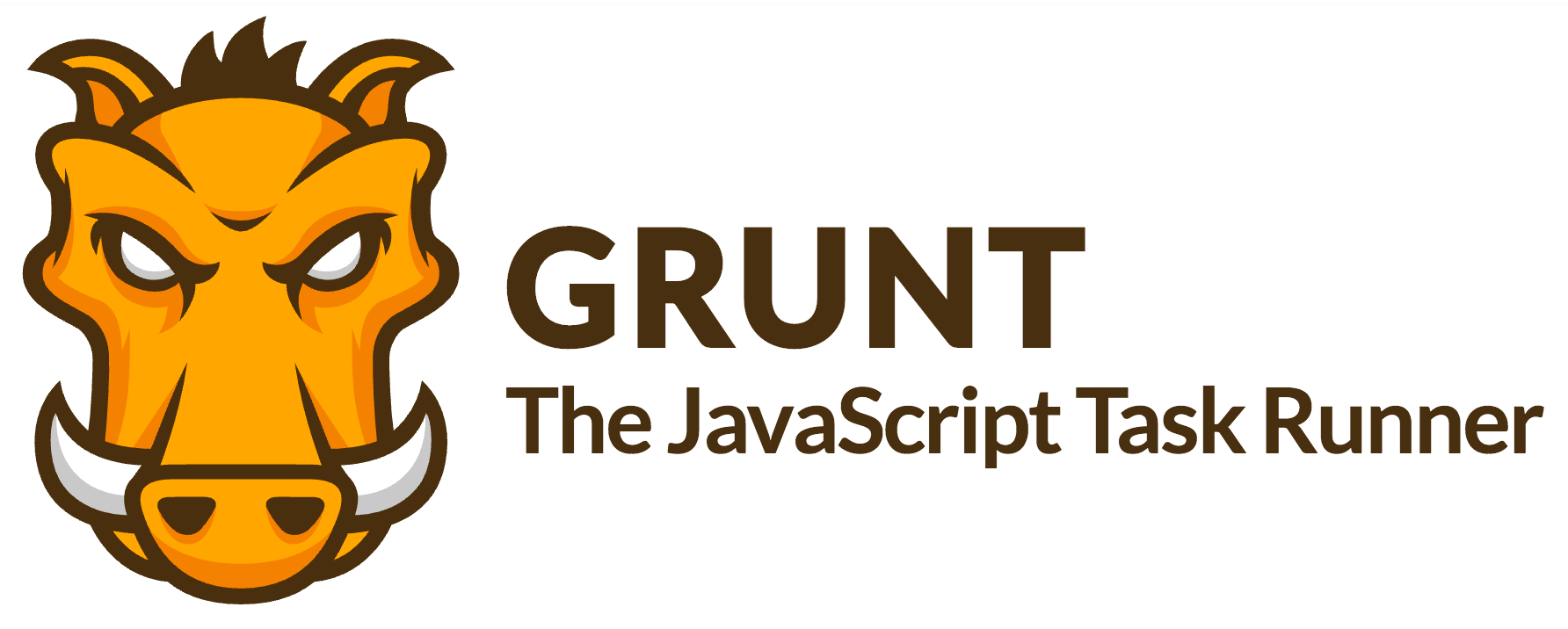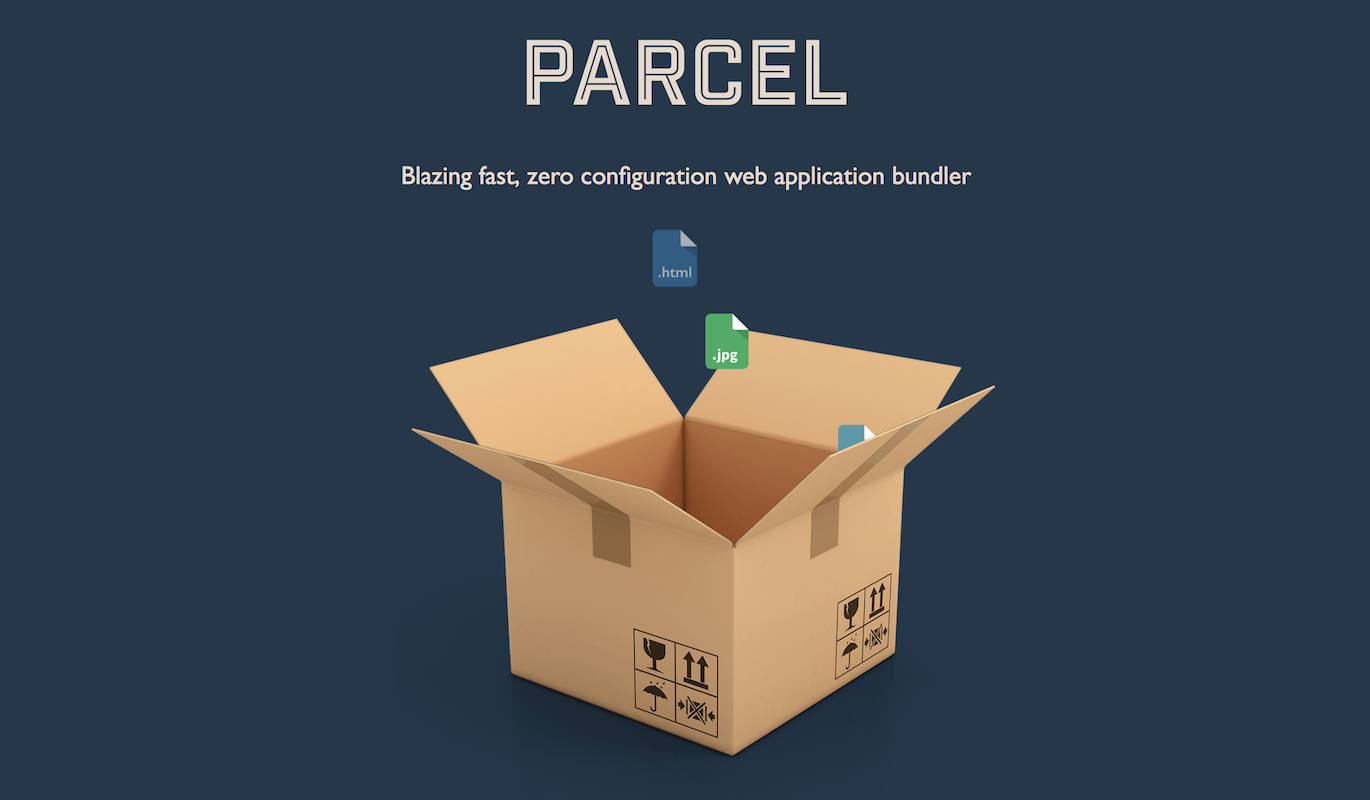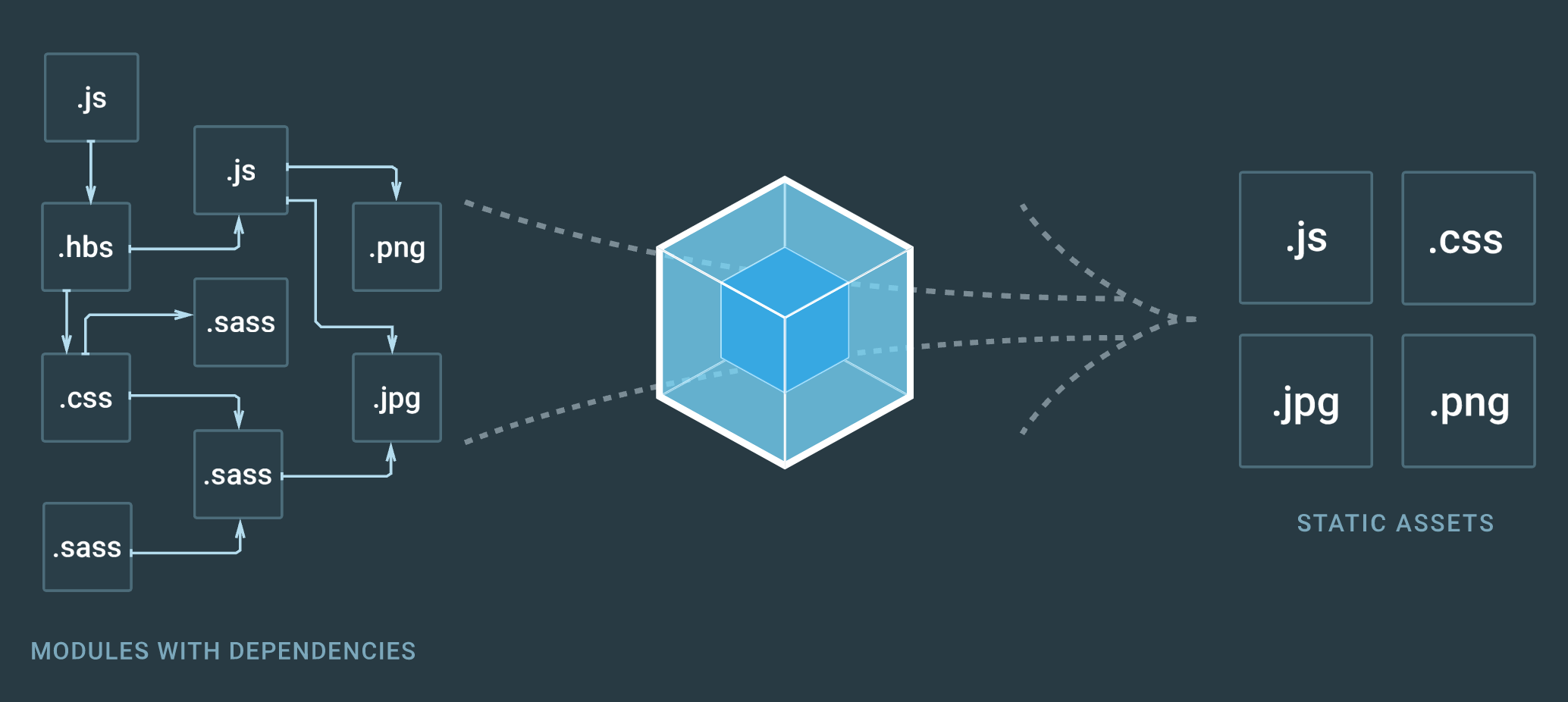构造工具的比较
Back in the day, it was enough to concatenate scripts together. Times have changed, though, and now distributing your JavaScript code can be a complicated endeavor. This problem has escalated with the rise of single-page applications (SPAs). They tend to rely on many hefty libraries.
For this reason, there are multiple strategies on how to load them. You could load them all at once or consider loading libraries as you need them. Webpack supports many of these sorts of strategies.
The popularity of Node and npm, its package manager, provide more context. Before npm became popular, it was hard to consume dependencies. There was a period when people developed frontend specific package managers, but npm won in the end. Now dependency management is more comfortable than before, although there are still challenges to overcome.
Task Runners
Historically speaking, there have been many build tools. Make is perhaps the best known, and it's still a viable option. Specialized task runners, such as Grunt and Gulp were created particularly with JavaScript developers in mind. Plugins available through npm made both task runners powerful and extendable. It's possible to use even npm scripts as a task runner. That's common, particularly with webpack.
Make
Make goes way back, as it was initially released in 1977. Even though it's an old tool, it has remained relevant. Make allows you to write separate tasks for various purposes. For instance, you could have different tasks for creating a production build, minifying your JavaScript or running tests. You can find the same idea in many other tools.
Even though Make is mostly used with C projects, it's not tied to C in any way. James Coglan discusses in detail how to use Make with JavaScript. Consider the abbreviated code based on James' post below:
Makefile
PATH := node_modules/.bin:$(PATH)
SHELL := /bin/bash
source_files := $(wildcard lib/*.coffee)
build_files := $(source_files:%.coffee=build/%.js)
app_bundle := build/app.js
spec_coffee := $(wildcard spec/*.coffee)
spec_js := $(spec_coffee:%.coffee=build/%.js)
libraries := vendor/jquery.js
.PHONY: all clean test
all: $(app_bundle)
build/%.js: %.coffee
coffee -co $(dir $@) $<
$(app_bundle): $(libraries) $(build_files)
uglifyjs -cmo $@ $^
test: $(app_bundle) $(spec_js)
phantomjs phantom.js
clean:
rm -rf build
With Make, you model your tasks using Make-specific syntax and terminal commands making it possible to integrate with webpack.
npm scripts as a Task Runner
Even though npm CLI wasn't primarily designed to be used as a task runner, it works as such thanks to package.json scripts field. Consider the example below:
package.json
"scripts": {
"start": "webpack-dev-server --env development",
"build": "webpack --env production",
"build:stats": "webpack --env production --json > stats.json"
},
These scripts can be listed using npm run and then executed using npm run <scrip>. You can also namespace your scripts using a convention like test:watch. The problem with this approach is that it takes care to keep it cross-platform.
Instead of rm -rf, you likely want to use utilities such as rimraf and so on. It's possible to invoke other tasks runners here to hide the fact that you are using one. This way you can refactor your tooling while keeping the interface as the same.
Grunt

Grunt was the first famous task runner for frontend developers. Its plugin architecture contributed towards its popularity. Plugins are often complicated by themselves. As a result, when configuration grows, it can become difficult to understand what's going on.
Here's an example from Grunt documentation. In this configuration, you define a linting and watcher tasks. When the watch task gets run, it triggers the lint task as well. This way, as you run Grunt, you get warnings in real-time in the terminal as you edit the source code.
Gruntfile.js
module.exports = grunt => {
grunt.initConfig({
lint: {
files: ["Gruntfile.js", "src/**/*.js", "test/**/*.js"],
options: {
globals: {
jQuery: true,
},
},
},
watch: {
files: ["<%= lint.files %>"],
tasks: ["lint"],
},
});
grunt.loadNpmTasks("grunt-contrib-jshint");
grunt.loadNpmTasks("grunt-contrib-watch");
grunt.registerTask("default", ["lint"]);
};
In practice, you would have many small tasks for specific purposes, such as building the project. An essential part of the power of Grunt is that it hides a lot of the wiring from you.
Taken too far, this can get problematic. It can become hard to understand what's going on under the hood. That's the architectural lesson to take from Grunt.
grunt-webpack plugin allows you to use webpack in a Grunt environment while you leave the heavy lifting to webpack.
Gulp

Gulp takes a different approach. Instead of relying on configuration per plugin, you deal with actual code. If you are familiar with Unix and piping, you'll like Gulp. You have sources to match files, filters to operate on these sources, and sinks to pipe the build results.
Here's an abbreviated sample Gulpfile adapted from the project's README to give you a better idea of the approach:
Gulpfile.js
const gulp = require("gulp");
const coffee = require("gulp-coffee");
const concat = require("gulp-concat");
const uglify = require("gulp-uglify");
const sourcemaps = require("gulp-sourcemaps");
const del = require("del");
const paths = {
scripts: ["client/js/**/*.coffee", "!client/external/**/*.coffee"],
};
// Not all tasks need to use streams.
// A gulpfile is another node program
// and you can use all packages available on npm.
gulp.task("clean", () => del(["build"]));
gulp.task("scripts", ["clean"], () =>
// Minify and copy all JavaScript (except vendor scripts)
// with source maps all the way down.
gulp
.src(paths.scripts)
// Pipeline within pipeline
.pipe(sourcemaps.init())
.pipe(coffee())
.pipe(uglify())
.pipe(concat("all.min.js"))
.pipe(sourcemaps.write())
.pipe(gulp.dest("build/js"))
);
gulp.task("watch", () => gulp.watch(paths.scripts, ["scripts"]));
// The default task (called when you run `gulp` from CLI).
gulp.task("default", ["watch", "scripts"]);
Given the configuration is code, you can always hack it if you run into troubles. You can wrap existing Node packages as Gulp plugins, and so on. Compared to Grunt, you have a clearer idea of what's going on. You still end up writing a lot of boilerplate for casual tasks, though. That is where newer approaches come in.
webpack-stream allows you to use webpack in a Gulp environment.
Script Loaders
For a while, RequireJS, a script loader, was popular. The idea was to provide an asynchronous module definition and build on top of that. Fortunately, the standards have caught up, and RequireJS seems more like a curiosity now.
RequireJS
RequireJS was perhaps the first script loader that became genuinely popular. It gave the first proper look at what modular JavaScript on the web could be. Its greatest attraction was AMD. It introduced a define wrapper:
define(["./MyModule.js"], function (MyModule) {
return function() {}; // Export at module root
});
// or
define(["./MyModule.js"], function (MyModule) {
return {
hello: function() {...}, // Export as a module function
};
});
Incidentally, it's possible to use require within the wrapper:
define(["require"], function (require) {
var MyModule = require("./MyModule.js");
return function() {...};
});
This latter approach eliminates a part of the clutter. You still end up with code that feels redundant. ES2015 and other standards solve this.
Jamund Ferguson has written an excellent blog series on how to port from RequireJS to webpack.
JSPM

Using JSPM is entirely different than previous tools. It comes with a command line tool of its own that is used to install new packages to the project, create a production bundle, and so on. It supports SystemJS plugins that allow you to load various formats to your project.
Bundlers
Task runners are great tools on a high level. They allow you to perform operations in a cross-platform manner. The problems begin when you need to splice various assets together and produce bundles. bundlers, such as Browserify, Brunch, or webpack, exist for this reason and they operate on a lower level of abstraction. Instead of operating on files, they operate on modules and assets.
Browserify

Dealing with JavaScript modules has always been a bit of a problem. The language itself didn't have the concept of modules till ES2015. Ergo, the language was stuck in the '90s when it comes to browser environments. Various solutions, including AMD, have been proposed.
Browserify is one solution to the module problem. It allows CommonJS modules to be bundled together. You can hook it up with Gulp, and you can find smaller transformation tools that allow you to move beyond the basic usage. For example, watchify provides a file watcher that creates bundles for you during development saving effort.
The Browserify ecosystem is composed of a lot of small modules. In this way, Browserify adheres to the Unix philosophy. Browserify is more comfortable to adopt than webpack, and is, in fact, a good alternative to it.
Splittable is a Browserify wrapper that allows code splitting, supports ES2015 out of the box, tree shaking, and more. bankai is another option to consider.
ify-loader and transform-loader allow you to use Browserify transforms with webpack.
Brunch

Compared to Gulp, Brunch operates on a higher level of abstraction. It uses a declarative approach similar to webpack's. To give you an example, consider the following configuration adapted from the Brunch site:
module.exports = {
files: {
javascripts: {
joinTo: {
"vendor.js": /^(?!app)/,
"app.js": /^app/,
},
},
stylesheets: {
joinTo: "app.css",
},
},
plugins: {
babel: {
presets: ["react", "env"],
},
postcss: {
processors: [require("autoprefixer")],
},
},
};
Brunch comes with commands like brunch new, brunch watch --server, and brunch build --production. It contains a lot out of the box and can be extended using plugins.
There is an experimental Hot Module Replacement runtime for Brunch.
Parcel

Parcel is a performant bundler, that unlike its predecessors, doesn't require configuration. The zero configuration approach has made it popular within the community. The idea is that you set up an index.html and Parcel will begin the bundling process based on that. It supports Hot Module Replacement out of the box.
There's a whole category of zero configuration bundlers like Parcel. These tools include microbundle, sfo, bili, ovi, and asbundle.
Webpack

You could say webpack takes a more unified approach than Browserify. Whereas Browserify consists of multiple small tools, webpack comes with a core that provides a lot of functionality out of the box.
Webpack core can be extended using specific loaders and plugins. It gives control over how it resolves the modules, making it possible to adapt your build to match specific situations and workaround packages that don't work correctly out of the box.
Compared to the other tools, webpack comes with initial complexity, but it makes up for this through its broad feature set. It's an advanced tool that requires patience. But once you understand the basic ideas behind it, webpack becomes powerful.
Other Options
You can find more alternatives as listed below:
- pundle advertises itself as a next-generation bundler and notes particularly its performance.
- Rollup focuses on bundling ES2015 code. Tree shaking is one of its selling points and it supports code splitting as well. You can use Rollup with webpack through rollup-loader.
- AssetGraph takes an entirely different approach and builds on top of HTML semantics making it ideal for hyperlink analysis or structural analysis. webpack-assetgraph-plugin bridges webpack and AssetGraph together.
- FuseBox is a bundler focusing on speed. It uses a zero-configuration approach and aims to be usable out of the box.
- StealJS is a dependency loader and a build tool which has focused on performance and ease of use.
- Flipbox wraps many bundlers behind a uniform interface.
- Blendid is a blend of Gulp and bundlers to form an asset pipeline.
总结
Historically there have been a lot of build tools for JavaScript. Each has tried to solve a specific problem in its way. The standards have begun to catch up, and less effort is required around basic semantics. Instead, tools can compete on a higher level and push towards better user experience. Often you can use a couple of separate solutions together.
内容回顾:
- Task runners and bundlers solve different problems. You can achieve similar results with both, but often it's best to use them together to complement each other.
- Older tools, such as Make or RequireJS, still have influence even if they aren't as popular in web development as they once were.
- Bundlers like Browserify or webpack solve an important problem and help you to manage complex web applications.
- Emerging technologies approach the problem from different angles. Sometimes they build on top of other tools, and at times they can be used together.